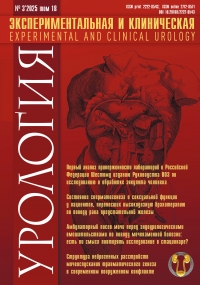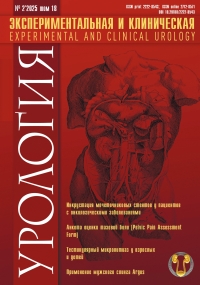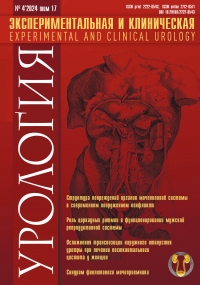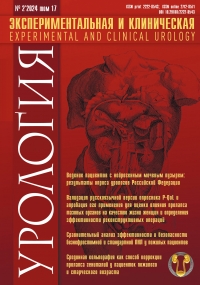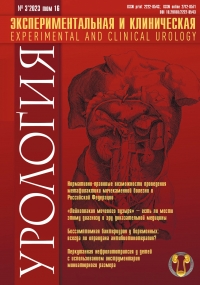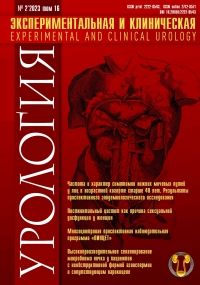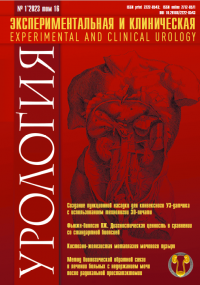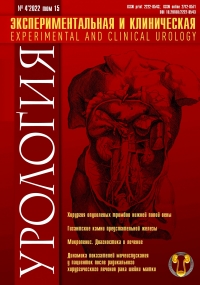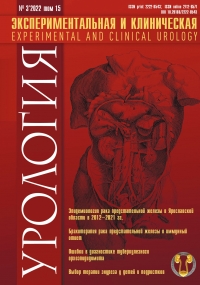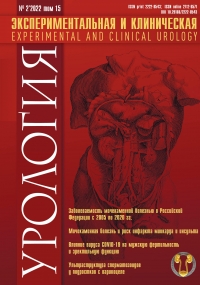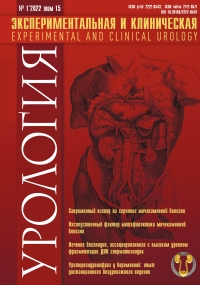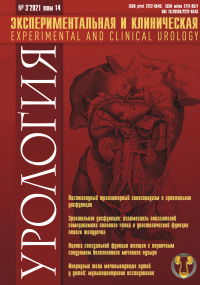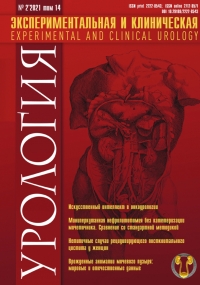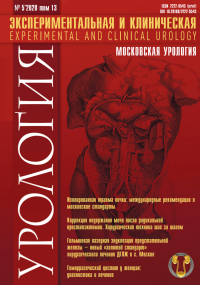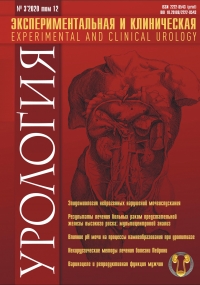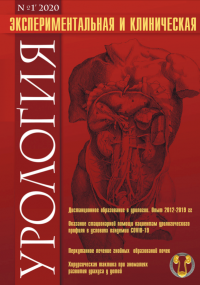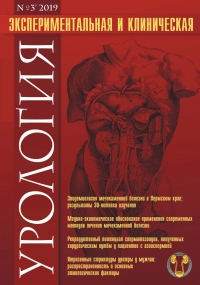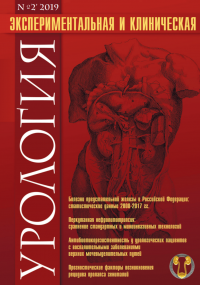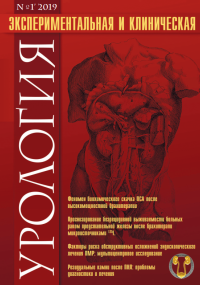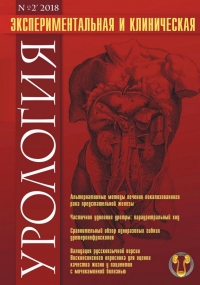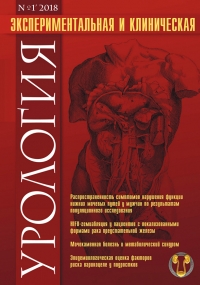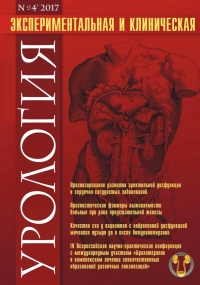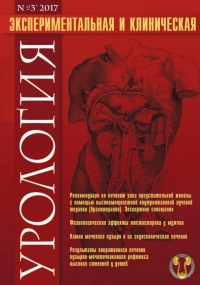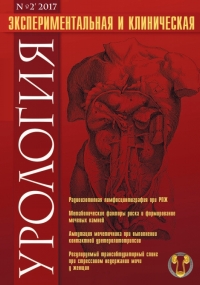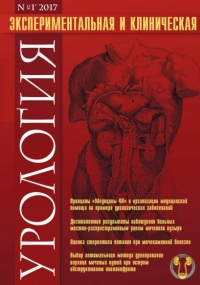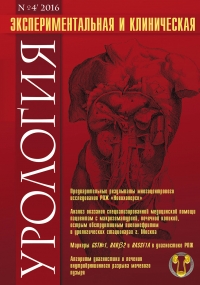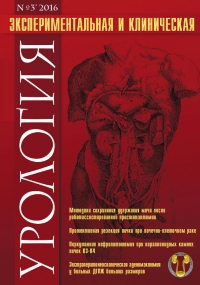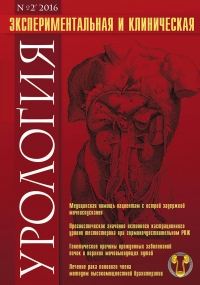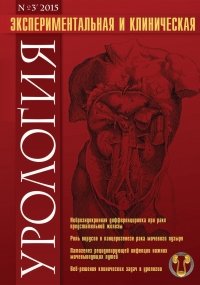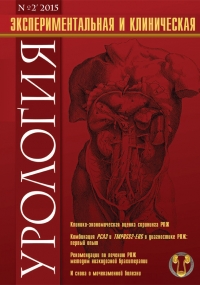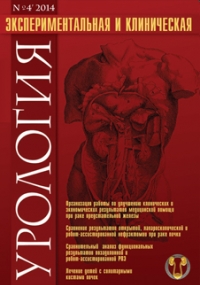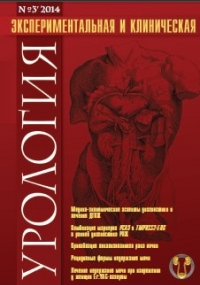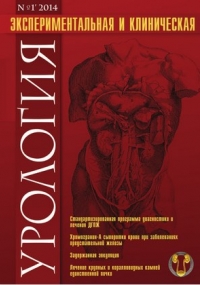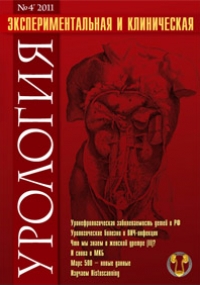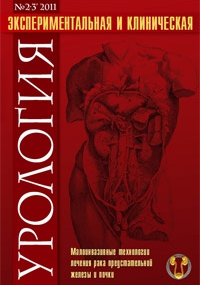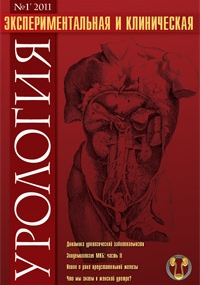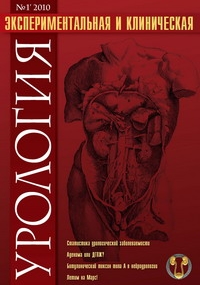Efficiency of citrate drug «Blemaren» in urate nephrolithiasis
- Aboyan I.A. – Dr.Sc., Professor, Chief Physician of the MBUZ KDC "Zdorovie", e-mail: aboyan@center-zdorovie.ru
- Sknar V.A. – urologist, MBUZ KDC «Zdorovie», e-mail: vitsknar@aaanet.ru; sknar@center-zdorovie.ru
- Pavlov S.V. – PhD, Head of organizational-methodical department MBUZ KDC «Zdorovie», e-mail: pavlovsvzdorovie@yandex.ru
 2846
2846 Urolithiasis has high medical and social significance, which is accounted by its high incidence, which is up to 10% worldwide and is continuously growing in many countries. Recently, the increase in the incidence of uric acid nephrolithiasis has been recorded, which is connected to the change in eating habits and lifestyle. The aim of out study was to investigate the effectiveness of the descending litholysis using citrate mixtures and to study the dynamics of the density of uric acid and mixed concrements.
Materials and methods. We studied the group of 30 patients (14 females and 16 males at the age of 27-64 years) with uric acid nephrolithiasis. All patients have been receiving citrate drug Blemaren in an individually-adjusted, pH-dependent dose from ½ of the tablet to 1.5- 2 tablets three times a day. In order to correct hyperuricemia and/or hyperuricuria, allopurinol was prescribed: 100 mg 1-2 times per day.
Results. Complete dissociation of concrements was observed in 22 patients (73.33%). In 6 cases (20%), the decrease in concrement size was observed. In 3 patients among them, the stones were discharged without any medical aid. In the remaining 3 patients with the decrease in stone size, distant lithotripsy was performed. We noted the dependency of the effectiveness of concrement dissociation on theirsize. Using X-ray phase analysis, we also studied the correlation between the effectiveness of treatment and concrement density before and aer the treatment and the decrease in concrement density and the concrement composition.
Conclusions. During our study we revealed the decrease in the concrement density as a result of citrate mixture therapy in all patients. Complete concrement dissociation was achieved in 73.3% of patients. In these patients, the density of stones was less than 500 HU.
Authors declare lack of the possible conflicts of interests.
| Attachment | Size |
|---|---|
| Download | 724.5 KB |


